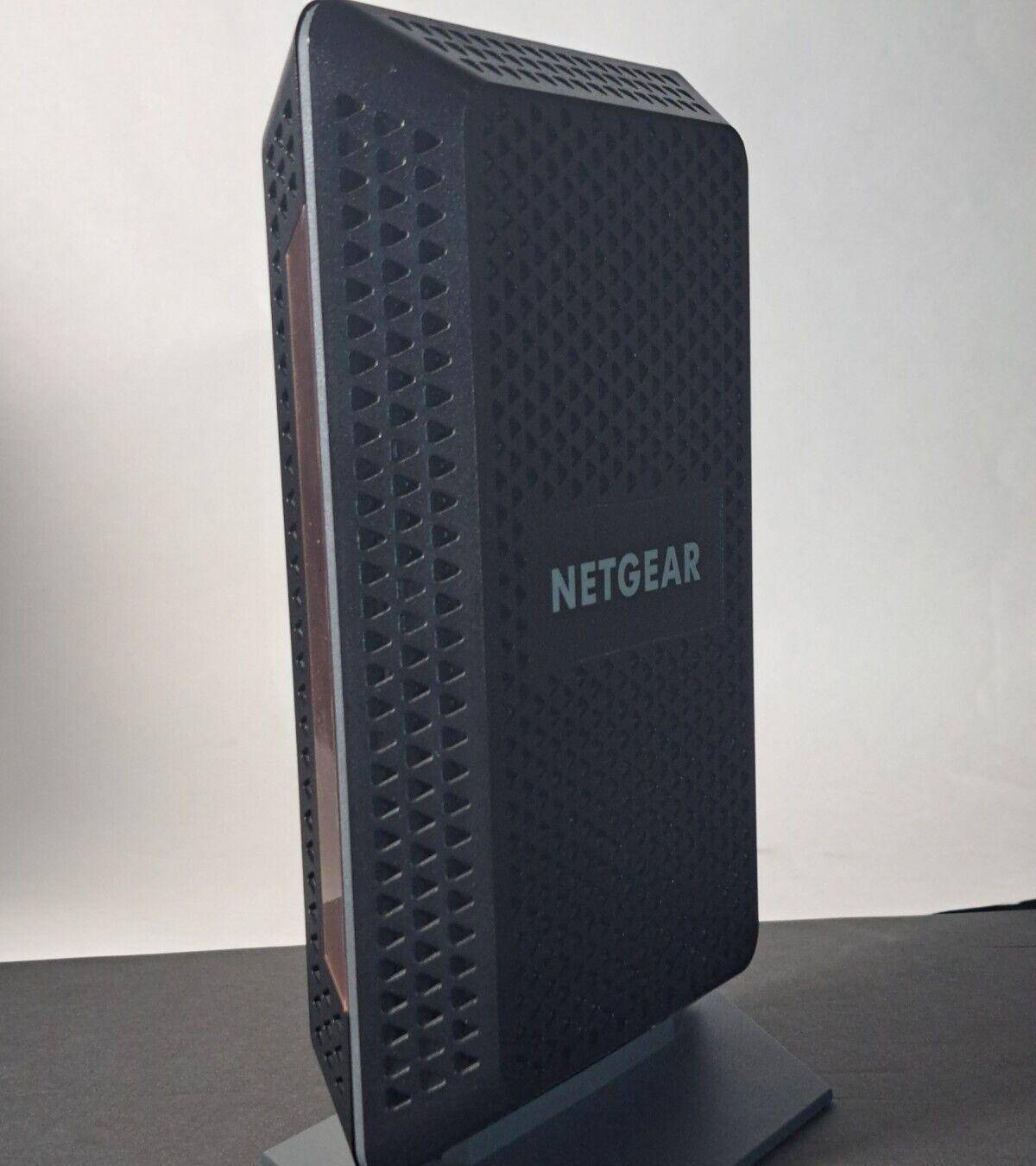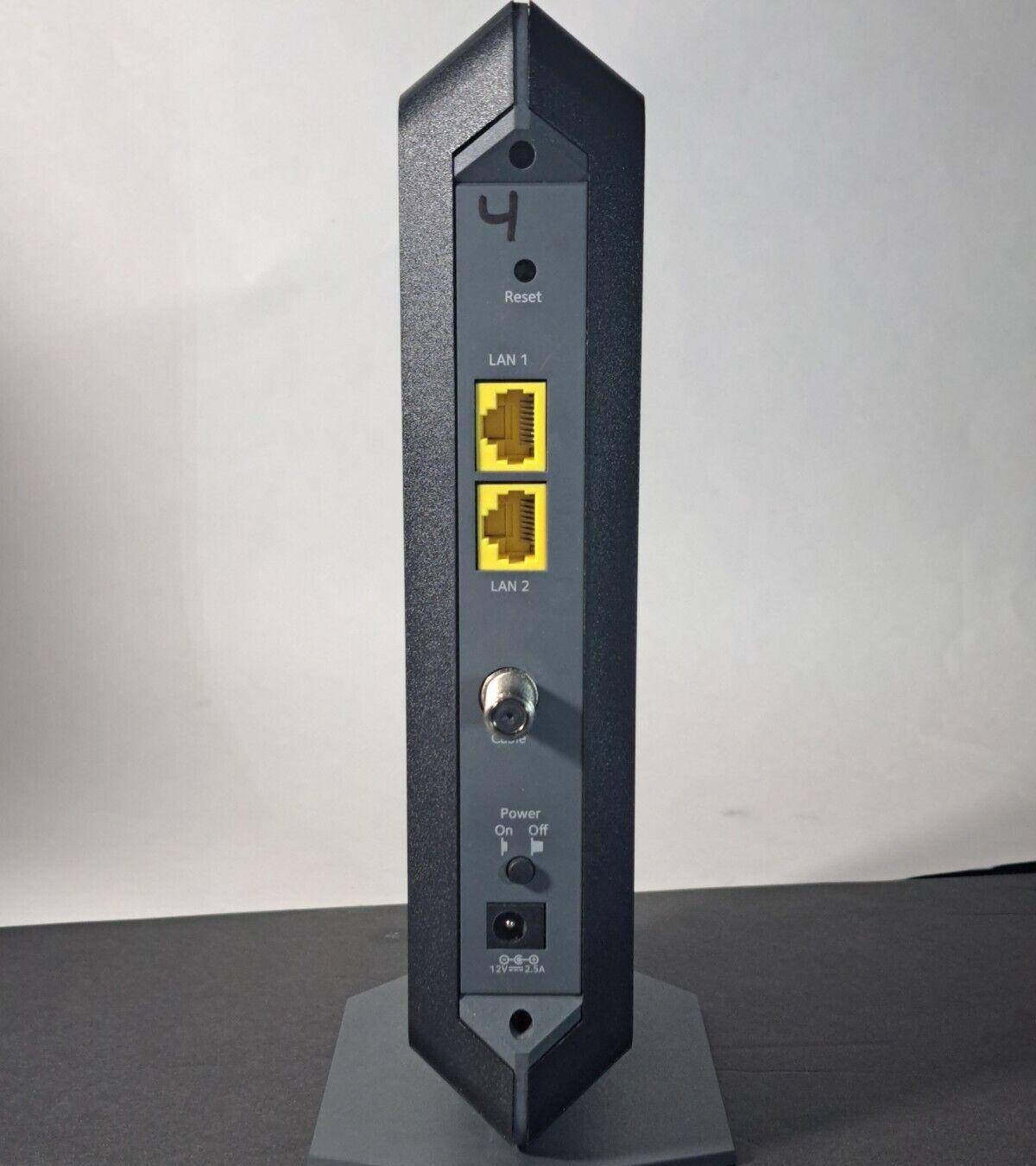Netgear CM1000 vs Netgear CM1100: Which One in 2025?

Both CM1000 and CM1100 are competent DOCSIS 3.1 modems, making it difficult to choose between them. Building on this statement is this detailed comparison between the Netgear CM1000 vs CM1100.
Netgear CM1000 vs CM1100: Quick Comparison
The Key Differences
The key differences between Netgear CM1000 vs. Netgear CM1100:
Ports: While both these cable modems offer exceptional wired speeds, the Netgear CM1100 steals the show with an additional port. With 2 Gig Ethernet ports to show for it, the CM1100 is a match made in heaven if you have multiple smart devices at home.
Speeds: As the theoretical speeds differ, owing to the disparity in terms of Ethernet ports, you can also expect the real-time data rates to vary. I tested both these modems on a Comcast Gigabit plan, only to find that the Netgear CM1100 outpaces the competition with practical data rates reaching up to 950 Mbps, as opposed to 880 Mbps exhibited by the CM1000.
Gaming Performance: As far as gaming performances are concerned, the CM1100 looks like a better choice because it can reach higher wired throughput and help the associated consoles like PS4 perform better, regardless of the congestion.
Link Aggregation: As discussed in the Netgear CM1100 review, it comes equipped with two Gig Ethernet ports. It is the best candidate to showcase link aggregation support for achieving higher internet speeds, with or without a router connected.
Pricing: The Netgear CM1000 seems more cost-effective at around $110, provided you opt for the refurbished model. However, if you prefer an apples-to-apples comparison at $129, the CM1100 seems like a more balanced modem to purchase.
Design: Although the layout might look similar to the naked eye, certain design-centric differences are stacked in favor of the Netgear CM1000. This modem is lighter and sleeker despite sharing similar heat-dissipating vents with the CM1100.
Similarities Between Netgear CM1000 and CM1100
- Standard vertical layout
- Standard DOCSIS tech with integrated QoS functionality
- Powerful Broadcom BCM3390 chipset
- 256MB of RAM for cutting through congestion
- Dedicated customer support that works 24x7
- IPv6 functionality for faster auto-configuration
- 128MB of flash memory for storing configuration details
Speed & Compatibility
Coming to the data rates, the promises close to 1Gbps and delivers close to 900Mbps in real-time. The CM1100, however, exhibits maximum speed limits of up to 2Gbps and almost 950Mbps of theoretical speed capping on each of the two ports.
Improving the performances further is the integrated QoS support, which helps you prioritize traffic as per requirements. Also, the boasts link aggregation support for helping you achieve higher, multi-gig speeds.
As far as ISP compatibility is concerned, both these modems are well-suited for plans from Comcast Xfinity, Spectrum, Cox, and a few more.
Design & Port Setup
Amid diverse speculations and inferences, a few modem-specific traits deserve special mention. This is where a discussion concerning modem design and port setup makes a lot of sense.
To start with, both these modems boast comparable form factors, with the being a tad sleeker and lighter at 0.84 pounds.
Also, this modem measures 8.8 x 5.4 x 5.9 inches, making it quite sleek compared to other retail products. Finally, the layout is extremely well-ventilated, and the hardened plastic case feels durable enough.
The , on the other hand, weighs 1 pound and measures 8.80 x 3.4 x 5.9 inches.


A major disparity exists in the port arrangement, with the CM1000 showing one GigE port instead of two ports on the CM1100.
👉 The Best Routers For Streaming TV.
Who should buy the Netgear CM1000?
The Netgear CM1000 seems like a better fit if you prefer:
- A networking setup for smaller houses
- A modem for temperate zones
- Product for Gig and mid-level internet plans
- Networking resources for 1080p streaming, video conferencing, and more
Who should buy the Netgear CM1100?
Netgear’s CM1100 seems like a good investment if you want a modem that:
- Covers a wider area
- Caters to multi-Gig ISPs
- Works perfectly for 4K streaming
- It doesn’t overheat a bit
Verdict
Both these modems look like estranged brothers, with a similar design, processing setup, and aesthetics making them virtually indistinguishable at times. However, I actively reviewed each aspect of these modems, i.e., the Netgear CM1000 and Netgear CM1100, tracking them beyond the usual DOCSIS 3.1 technology. 32x8 channel bonding support for DOCSIS 3.0 fallback and a standard web interface.
Despite the endless similarities, I liked the Netgear CM1100 better, owing to the better cost-to-ownership ratio and ability to assume higher multi-gig speeds. While the processing setup and internal circuitry remain comparable, it eventually comes down to better port arrangement and competitive pricing that puts the Netgear CM1100 on a higher pedestal than the CM1000.
Also read: ARRIS SB8200 vs Netgear CM1000
Want more useful connectivity guides? Checkout:
